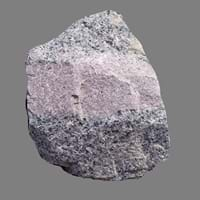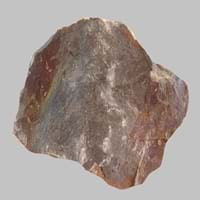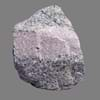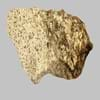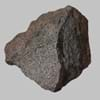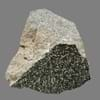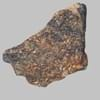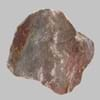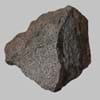Definition
Aplite is a fine-grained granite composed mainly of feldspar and quartz
Hawaiite is volcanic rock that resembles basalt. It is an olivine basalt with intermediate composition between alkali olivine and mugearite
Origin
Iran
Hawaii Islands
Discoverer
Unknown
Joseph Iddings
Etymology
From German Aplit, from Greek haploos simple + -ite
From Hawaii Islands
Class
Igneous Rocks
Igneous Rocks
Sub-Class
Durable Rock, Hard Rock
Durable Rock, Medium Hardness Rock
Other Categories
Fine Grained Rock, Opaque Rock
Opaque Rock
Texture
Granular, Graphic
Glassy, Massive, Porphyritic, Scoriaceous, Vesicular
Color
Black, Grey, Orange, Pink, White
Black, Brown, Light to Dark Grey
Durability
Durable
Durable
Scratch Resistant
Yes
Yes
Appearance
Veined or Pebbled
Dull and Soft
Interior Uses
Bathrooms, Countertops, Decorative Aggregates, Entryways, Floor Tiles, Homes, Hotels, Kitchens, Stair Treads
Decorative Aggregates, Floor Tiles, Flooring, Homes, Hotels, Interior Decoration, Kitchens
Exterior Uses
As Building Stone, As Facing Stone, Bridges, Paving Stone, Near Swimming Pools, Office Buildings, Resorts
As Building Stone, As Facing Stone, Paving Stone, Garden Decoration, Office Buildings
Other Architectural Uses
Curbing
Curbing
Construction Industry
As Dimension Stone
As Dimension Stone, Cobblestones, Rail Track Ballast, Roadstone
Medical Industry
Not Yet Used
Not Yet Used
Antiquity Uses
Artifacts, Monuments, Sculpture, Small Figurines
Artifacts
Commercial Uses
Curling, Gemstone, Laboratory bench tops, Small Sculptures, Tombstones
Creating Artwork, Sea Defence
Types
Not Available
Not Available
Features
Available in lots of colors, Available in Lots of Colors and Patterns, Is one of the oldest rock
Has High structural resistance against erosion and climate, Very fine grained rock
Archaeological Significance
Famous Monuments
Data Not Available
Easter Island in the Polynesian Triangle, Pacific Ocean
Sculpture
Used
Not Yet Used
Famous Sculptures
Data Not Available
Not Applicable
Pictographs
Not Used
Used
Petroglyphs
Not Used
Used
Figurines
Used
Not Yet Used
Formation
Aplites belong to intrusive igneous rocks which are mostly quart and alkali feldspar and are formed from residual eutectic granitic liquids and represent the final crystallization products of magma.
Hawaiite is a fine-grained, hard rock that forms when bits of lava shoot out of volcanoes and reach the Earth's surface.
Mineral Content
Amphibole, Biotite, Feldspar, Hornblade, Micas, Muscovite or Illite, Plagioclase, Pyroxene, Quartz
Olivine, Plagioclase, Pyroxene
Compound Content
Aluminium Oxide, CaO, Iron(III) Oxide, FeO, Potassium Oxide, MgO, MnO, Sodium Oxide, Phosphorus Pentoxide, Silicon Dioxide, Titanium Dioxide
Aluminium Oxide, CaO, Iron(III) Oxide, FeO, Potassium Oxide, MgO, MnO, Sodium Oxide, Phosphorus Pentoxide, Silicon Dioxide, Titanium Dioxide
Types of Metamorphism
Burial Metamorphism, Cataclastic Metamorphism, Hydrothermal Metamorphism, Regional Metamorphism
Impact Metamorphism
Types of Weathering
Chemical Weathering, Mechanical Weathering
Biological Weathering
Types of Erosion
Chemical Erosion, Coastal Erosion, Wind Erosion
Not Applicable
Grain Size
Very fine-grained
Not Applicable
Fracture
Not Available
Conchoidal
Streak
White
Not Available
Porosity
Less Porous
Less Porous
Luster
Dull to Pearly to Subvitreous
Not Available
Cleavage
Not Available
Not Applicable
Toughness
Not Available
Not Available
Specific Gravity
2.6
Not Available
Transparency
Opaque
Opaque
Density
2.6 g/cm3
Not Available
Specific Heat Capacity
Not Available
Resistance
Heat Resistant, Wear Resistant
Heat Resistant, Pressure Resistant, Wear Resistant
Deposits in Eastern Continents
Asia
China, India, Iran, Saudi Arabia, Sri Lanka, Taiwan, Thailand, Turkey, Vietnam
India, Russia
Africa
Angola, Egypt, Madagascar, Namibia, Nigeria, South Africa
South Africa
Europe
Austria, Belgium, Finland, France, Germany, Italy, Norway, Sardinia, Spain, Switzerland, The Czech Republic, Venezuela
Iceland
Others
Not Yet Found
Hawaii Islands
Deposits in Western Continents
North America
Canada, USA
Canada, USA
South America
Not Yet Found
Brazil
Deposits in Oceania Continent
Australia
Not Yet Found
Not Yet Found
All about Aplite and Hawaiite Properties
Know all about Aplite and Hawaiite properties here. All properties of rocks are important as they define the type of rock and its application. Aplite and Hawaiite belong to Igneous Rocks.Texture of Aplite is Granular, Graphic whereas that of Hawaiite is Glassy, Massive, Porphyritic, Scoriaceous, Vesicular. Aplite appears Veined or Pebbled and Hawaiite appears Dull and Soft. The luster of Aplite is dull to pearly to subvitreous while that of Hawaiite is not available. Aplite is available in black, grey, orange, pink, white colors whereas Hawaiite is available in black, brown, light to dark grey colors. The commercial uses of Aplite are curling, gemstone, laboratory bench tops, small sculptures, tombstones and that of Hawaiite are creating artwork, sea defence.
